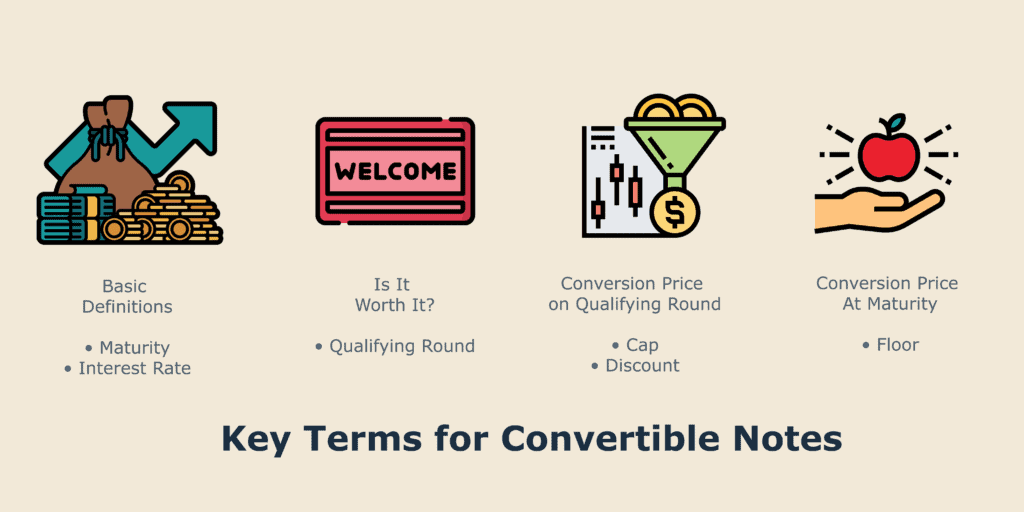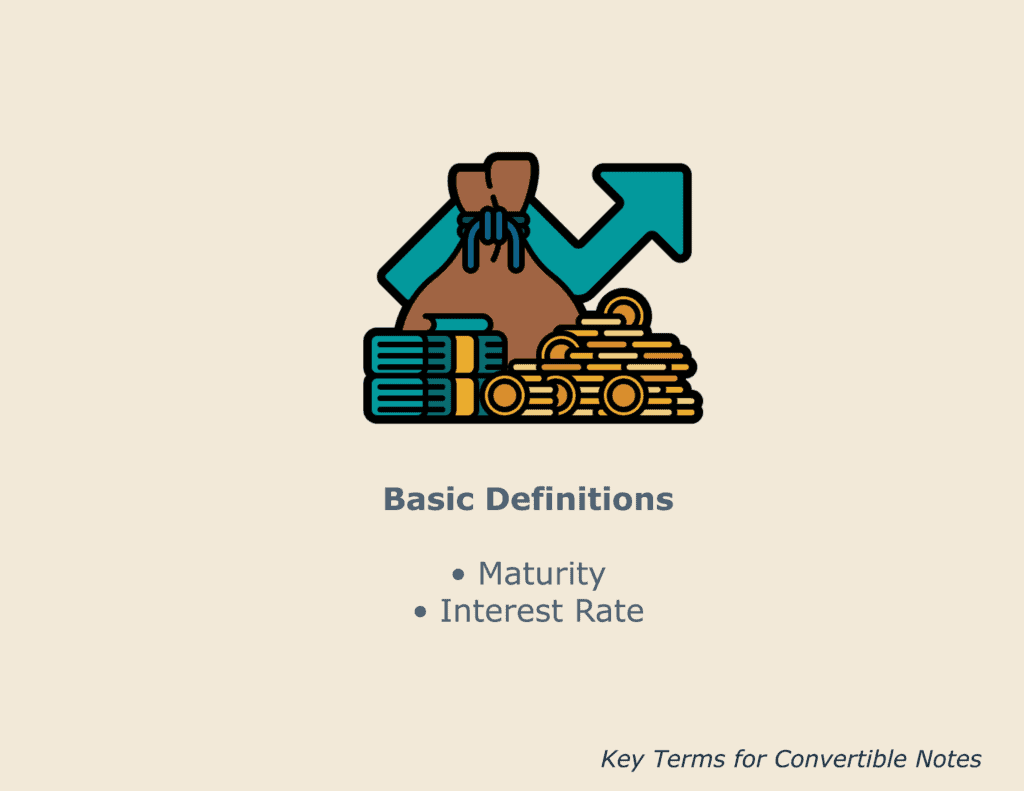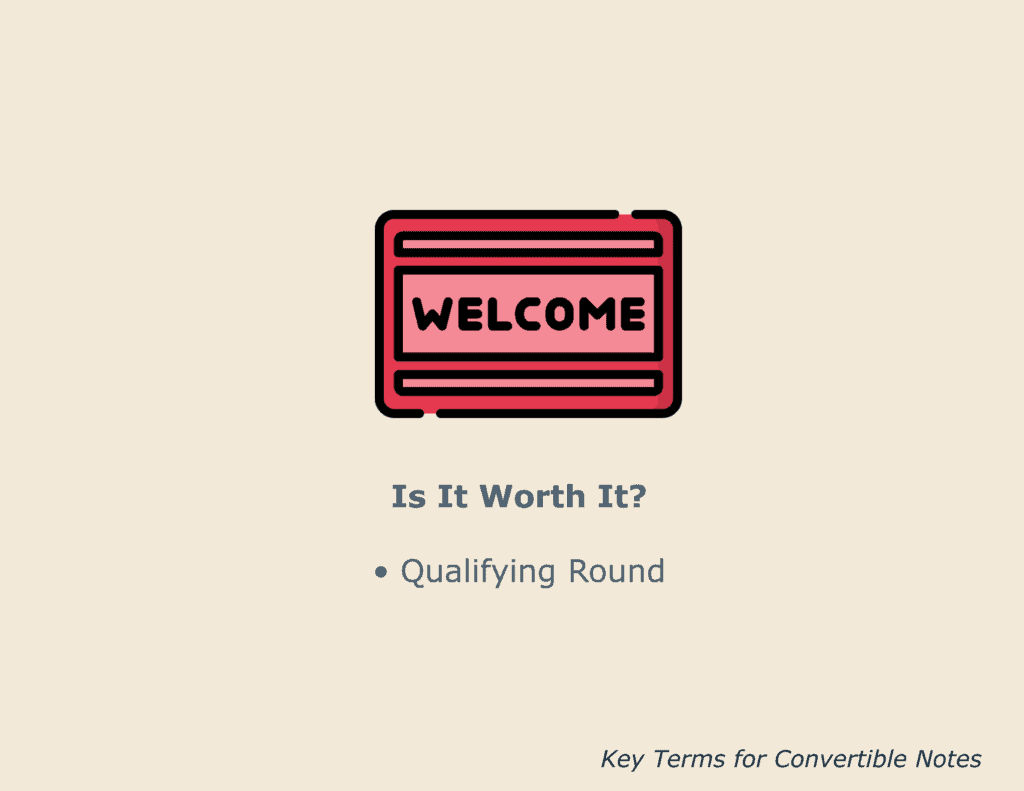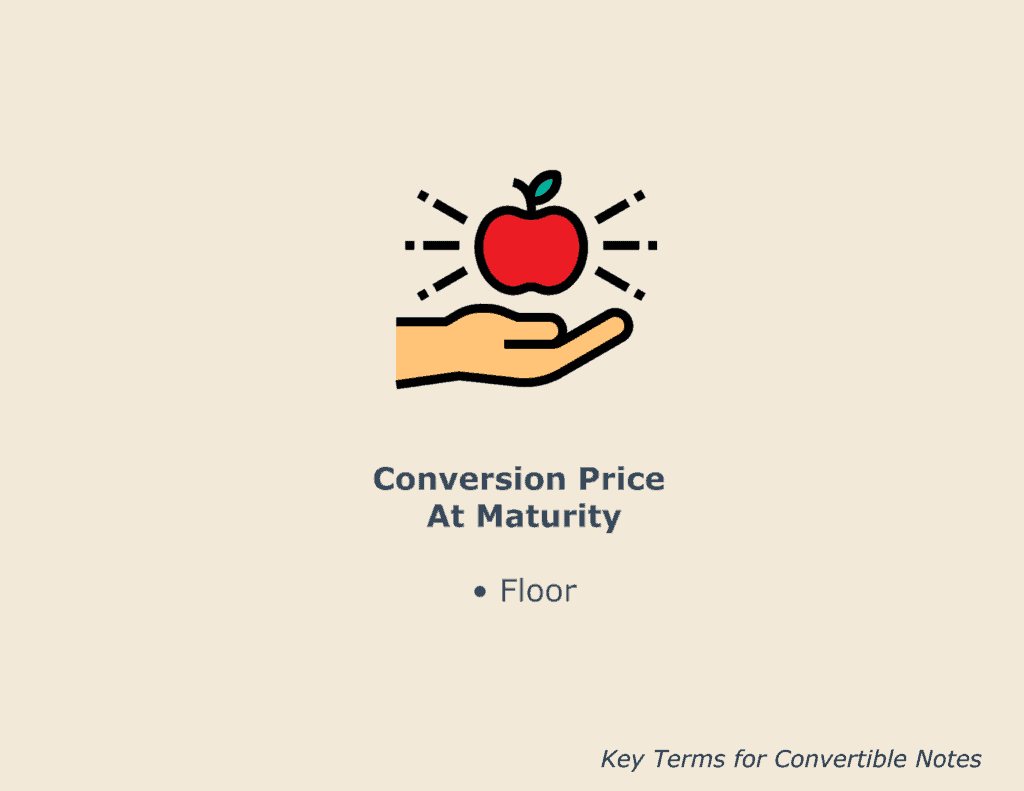Welcome to another round of legal chit chat! In Part 1, we covered what we believe are the key terms of equity investments that any founder should know to be able to discuss with VCs and run educated negotiations. In Part 2, we will cover the key terms on convertible notes and discuss pros and cons of using equity vs. convertible notes.
Disclaimer: this article in 2-parts are only our views on what we usually see and use, and by no means is a legal advice. Please consult a law firm before engaging into legal discussions/negotiations.

Key terms for convertible notes
Convertible notes are an alternative to equity investments that can be used for various reasons (that we will cover in our discussion equity vs. convertible notes). The main difference from equity is that convertible notes are a debt instrument (you don’t actually own shares of a company until you convert) and are thus considered more secured — in case of liquidation of the company, debt holders are more senior than equity holders to get back money from the proceeds (although, if a company is indeed liquidated, it will be unlikely that debt holders get much back anyway).
Convertible notes have their own set of key terms, although not dissimilar to equity terms. To illustrate, we will take the example of investor A investing $1M in your company, this time using convertible notes with a cap of $10M and a discount of 20% (see below for further explanations).

1. Maturity, interest rate
Since convertible notes are debt instrument, they have a maturity period and interest rate tied to them.
- Maturity: usually between 12 and 24 months which is normally the timeframe expected for the next round of equity fundraising to happen.
- Interest rate: like a regular debt (e.g. consumer loans, mortgage), interest accrue over time for convertible notes. Interest rates can be anywhere between 0 to 10% on an annual basis.

2. Qualifying round
As the name implies, convertible notes give to the holder the opportunity to convert into preferred shares by meeting certain conditions. One of them is for the company to raise a “large enough” round of equity funding (in one-shot, not aggregated over time). The spirit of this clause is to set a minimum size of round (e.g. $1M) so that it is significant enough to make the conversion “worth it”. For example, if an angel investor invests $10,000 in the company in equity (while investor A has put previously $1M), the conversion should not happen as the $10,000 are not significantly changing the shareholding structure of the company compared to the $1M. Depending on the maturity of the company and history of fundraising, the qualifying round value could be $500k or $5M.

3. Conversion price in case of qualifying round (cap, discount)
Once a qualifying round happens, the convertible notes are automatically converted into preferred shares through 2 parameters which impact the share price used for conversion:
- Cap: as the name implies, it is the maximum valuation at which the conversion can happen for the note holder. In our example, if investor B wants to invest in your company at $20M valuation, then investor A will still convert his notes into equity shares as-if the valuation was $10M – so his $1M (+ interest) of convertible notes will actually give him ownership of twice as much shares than an investor B investing $1M at $20M valuation in equity.
- Discount: this is how much discount you get on the share price of the conversion event. So if a conversion event happens and the share price is $1 per share and the notes have 20% discount, then the note holders will convert as-if the price was $0.80 instead of $1 (so again more shares for the same amount of money hence more shareholding)
These 2 parameters go hand-in-hand, and usually the conversion price clause will be drafted such that the conversion price is “the lower of” the 2: the share price calculated with cap and the share price calculated with discount. As a ballpark range, a valuation of an equity round above cap*(1+discount rate) will trigger a conversion of notes at the cap share price while anything below will trigger the discount (an exact calculation would take into account other potential convertible instruments etc.).

4. Conversion price when reaching maturity (floor)
If no qualifying round has happened by the time the convertible notes reach maturity, the note holders have the option (but will not be obliged) to convert into equity shares with a floor valuation – meaning to say this is the minimum valuation the company is worth. In our example with a cap at $10M, let’s assume the floor to be at $3M, then upon maturity the investor A can convert her $1M (+ interest) as-if the company was valued at $3M pre-money resulting in ~25% ownership (vs. ~10% if the notes were converted at the cap of $10M).

Pros and cons of using equity vs. convertible notes
There are several reasons why convertible notes have been gaining traction among the investors’ community and also amongst founders over the last few years as an alternative to do a “proper” equity round:
- Postponing the valuation exercise: as seen previously, the cap is more or less an indication of the potential valuation of the company. Given the conversion mechanisms, investing in convertible notes allows both the company and the investors to “postpone” the discussion on valuation to the next investor/next round of equity financing.
- Perceived speed of executing a deal: because there is no need to draft a full shareholder’s agreement in case of convertible notes (it’s a lender/borrower relationship, albeit with some investors’ like rights), VCs and companies tend to think that doing a round of financing with convertible notes will go faster than with a regular equity round.
At Qualgro, while we have invested in several companies using convertible notes, we would like to highlight a few points of attention if you are planning on using them:
- Convertible notes rights fundamentally clashes with equity holders’ rights and this will always end up in multi-parties negotiations: most convertible notes agreement is drafted such that the notes would convert “at the same time” (and in the same type of preferred shares) as the next equity round of financing. This wording directly clashes with the notion of “fully diluted” valuation or shareholding tied to equity terms. The way to solve this is to do an iterative calculation to find a middle ground for the share price that both note holders and upcoming equity holders would agree upon.
- Don’t forget dilution: more often than not, founders (and sometimes investors) tend to forget about the dilutive effect that convertible notes can and will have on cap tables later on, as no change on the cap-table happens when the money from the convertible notes comes in. However, given the structure with the cap/discount/floor explained above, the dilutive effect can actually be much stronger than with equity rounds. To illustrate: Let us say the cap makes it that the price per share is $2 (which would be the same price per share as if it was an equity round at a valuation = cap) with 20% discount. Now, if you have down round where the price per share is at $1:
- in case you got invested by investor A in equity previously, the anti-dilution clause will make the effective price per share of investor A land between $1 and $2 with weighted average, say $1.5, so increased dilution for common shareholders but still manageable.
- in case you got invested by investor A in convertible notes, then the conversion price per share will be $1×80%=$0.8 so investor A will have much more shares than compared to the equity scenario (almost double) hence the dilution for the common shareholders is stronger.
3. Stacking convertible notes is not healthy: this can happen when the proper assessment of the value of the company is postponed several times in a row and convertible notes start piling up with different caps and discounts. 2 main issues can arise from this situation:
- very complex calculations given that all the conversion mechanisms are intertwined, and each note impacts the others. This might also trigger complex negotiations that involve too many parties to agree on one specific conversion mechanism.
- very high resulting dilution on the common shareholders (founding team and employees) that is not seen until the conversion happens.
4. The speed of execution on the legal side is not critical: while the legal documents for convertible notes can be sometimes faster to draft compared to equity documents, the reality is that assessing the business potential is the most time consuming activity for investors anyway, and the time dedicated to closing the investment (legal, compliance) is minor compared to the due diligence. At Qualgro we spend the same effort and time assessing potential investments whether we invest using equity or convertible notes, for us the so-called “speed” of convertible notes is not an argument.
—
We hope that this 2-part article has shed some lights on the main legal terms that you will stumble upon while discussing with potential investors. While you should always rely on a law firm to help you navigate the intricacies of legal documents and their implication, we feel that founders should have at least this basic knowledge to be able to discuss toe-to-toe with VCs and protect your own rights.
—
About the author:
Minh Vu Hong is an Investor at Qualgro, with a focus on SaaS and other enterprise technology spaces such as data, AI and robotics. He is involved across the investment process, and works with portfolio companies in Southeast Asia, especially in Vietnam.
Previously a founder, his experience includes project management and sales at engineering companies, and strategy consulting at Kearney. Minh holds an M.Sc. from Ecole Polytechnique (France), and an M.Sc. from UC Berkeley (USA).





